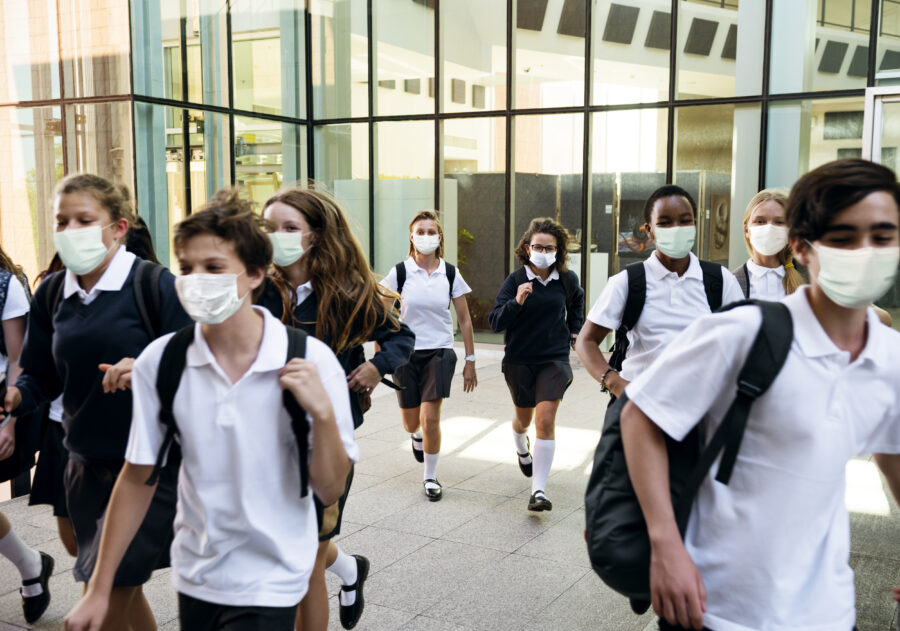On August 24, 2021, the U.S. Department of Education released a Letter addressing early intervention and educational experience for special education students in the upcoming 2021-2022 school year. The purpose of the Letter is to (1) address the pandemic’s impact on service disruptions, and (2) ensure full implementation of IDEA during the 2021–2022 school year.
For the upcoming 2021-2022 school year, the Department stated its expectation that all States (and their educational agencies) and school districts (referred to as “local educational agencies”) provide every student with the opportunity for full-time, in-person learning. Furthermore, the Department recognized that some parents may have specific health and safety concerns about sending their children back to in-person instruction because of the perceived health risk to the student’s immediate family and to other household members — even as parents are also concerned about their child missing the instructional and social and emotional opportunities that come with in-person learning. To address these concerns, the Department stated its expectation that local educational agencies put in place diverse prevention strategies including promoting vaccination, universal and correct mask-wearing in schools, and dissemination of updated CDC health and safety guidelines.
Furthermore, the Letter affirms there is no waiver of local educational agencies’ responsibilities to families and children with disabilities rights under the IDEA.
Lastly, the Letter addresses that in the coming weeks and months the Department will be releasing IDEA guidance documents focused on school reopening efforts, which will be titled “Department’s Return to School Roadmap.”
Child Find Guidance
On August 24, 2021, the Department released its first “Department’s Return to School Roadmap”, which provides guidance to reaffirm the importance of appropriate implementation of the “child find” obligations under Part B of the IDEA.[1] This guidance comes as many students are returning back to brick and mortar schools after having only received virtual learning since the start of the COVID-19 pandemic. It reaffirms that IDEA obligations stand, despite pandemic conditions.
The guidance is in a Q&A format and addresses questions such as:
- What is child find and who is responsible?
- Who can refer a child for an initial evaluation?
- Can schools require other interventions prior to referral for special education?
- Child find obligations during virtual learning?
- If a child made limited progress during virtual learning, does that require a referral?
Prior to the pandemic, many states and school districts relied on “child find” procedures that mainly focused on informal teacher observation and face to face instruction. Post pandemic, states and school districts need to reexamine their existing “child find” practices and initiate new activities in light of the education disruption caused by the COVID-19 pandemic. As “child find” is the responsibility of the state, districts and schools serving children virtually should not rely solely on referrals by parents as the primary vehicle for meeting IDEA’s child find requirements.
The Department is encouraging school districts to use COVID-19 relief funding to conduct additional screenings for children whose academic and behavioral needs may require an evaluation, and to increase awareness campaigns to spread information regarding special education supports. The Department acknowledges that during the pandemic, there was an increase in private school placement, homeschooling, and homelessness, which school districts need to address in updating their policies and procedures. Lastly, the Department is informing the states and schools districts that children who are experiencing long-term COVID-19 symptoms, or post COVID-19 conditions, should be referred for an initial evaluation to determine the impact of the long-term COVID-19 symptoms and the child’s academic and functional needs.
For more information see the August 24, 2021, U.S. Department of Education, Office of Special Education and Rehabilitation Services’ Letter to Special Education and Early Intervention Partners, and the August 24, 2021, U.S. Department of Education, Office of Special Education and Rehabilitation Services’ Return to School Roadmap.
by Alex Rodriguez
[1] The child find requirements in IDEA Part B require States to have policies and procedures in effect to ensure that all children with disabilities residing in the State who need special education and related services are identified, located, and evaluated, regardless of the severity of the disability.

